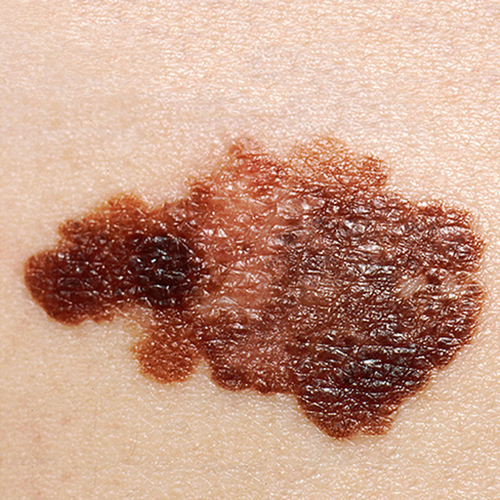
Researchers from UCLA Jonsson Comprehensive Cancer Center analyzed genetic changes in the organs of recently deceased patients to understand how metastatic cutaneous melanoma spreads in patients who have initially benefited from precision therapies. The team retrieved, within hours of death, tumors that had spread to various organs of 11 patients who had developed resistance after treatment with a MAPK inhibitor and/or immune checkpoint blockade.
Using whole-exome sequencing, whole-genome sequencing, and RNA-sequencing, they found that targeting the BRAF mutation-activated MAPK pathway can change the mutational profile of melanoma, which may have diagnostic or therapeutic implications.
“Despite recent and dramatic advances in systemic therapeutics for advanced or metastatic melanoma, many patients still run out of options when their disease escapes from therapies. The only way to understand how such lethal disease arise is to perform autopsies coupled with the most powerful and comprehensive ‘omic’ analyses,” lead author Roger Lo, MD, PhD, professor of medicine/dermatology at UCLA’s David Geffen School of Medicine told Inside Precision Medicine.
Results of the team’s study were published in Nature Medicine. UCLA’s collaborators came from the UNC Lineberger Comprehensive Cancer Center in Chapel Hill, NC and the Vanderbilt-Ingram Cancer Center in Nashville, Tenn.
Lo points out that much of what scientists know about cancers come from the first point of patient contact—before the disease has spread or been treated.
“Rapid” or “warm” autopsies give a picture of end-stage disease, because they are done shortly after death in previously consented patients. Most of these biopsies would not be justified in dying patients.
Getting consent involves either the patient or whoever has their power-of-attorney. “That’s not difficult if you have an established physician-patient relationship,” he said. “Although the conversation is heart wrenching.”
Using this approach, Lo and his colleagues hope to get a fuller view of what makes tumors becomes hard-to-treat,
“We hope to reconstruct, from the end of life, the lethal journey melanoma traverses across time and body sites,” said Lo. “We need to know how many ways, even within the same patient, the cancer evades these powerful therapies, what underlying processes create ‘new species’ capable of escaping therapies, whether the cancer coopts different organs to help it spread and resist therapies.”
In their melanoma study, the team found potential ways metastatic cancer cells infiltrated specific organ environments. This points to the need for distinct approaches in treating patients with metastatic disease in different organs.
“The ability of cancers to escape precision treatments results from outgrowth of variant subpopulations that harbor traits allowing them to be impervious to the therapies, sometimes by taking advantage of a particular organ’s environment,” Lo said.
Precision therapies targeting melanoma either block a critical cancer growth-and-survival pathway activated by mutations, or they reawaken the body’s cancer-killing T cells.
These researchers focused on two major subtypes of metastatic cutaneous melanoma classified by cancer-causing mutations in the genes BRAF and NRAS.
Patients whose melanoma harbors a BRAF gene mutation—found in about half of cases – are usually treated with either BRAF-targeted therapy and/or immune checkpoint blockade. These are typically administered one after another. Patients whose melanoma harbors a NRAS gene mutation—found in about 20% of patients—only have the option of immunotherapy.
“Cognizant of the caveats of cross-study comparisons, [we] singled out salient traits of terminal melanoma that distinguished it from early-stage melanoma and melanoma that had never been treated with either form of therapy,” said Sixue Liu, Ph.D., a post-doctoral fellow on the Lo team and the lead author on the paper.













